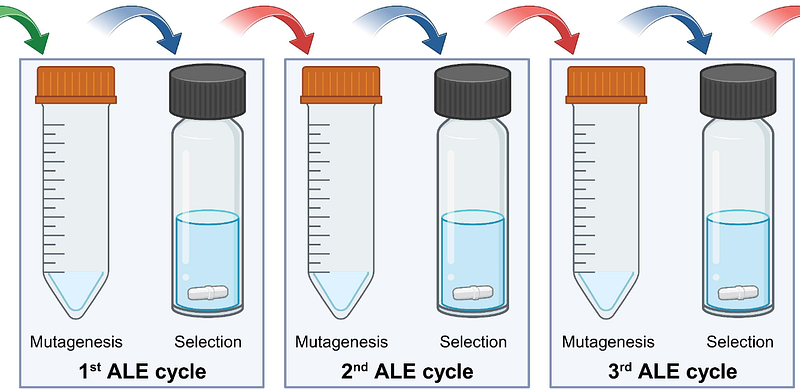Fast-track adaptive laboratory evolution of Cupriavidus necator H16 with divalent metal cations

Fast-track adaptive laboratory evolution of Cupriavidus necator H16 with divalent metal cations
Sitompul, S. N.; Price, J.; Tee, K. L.; Wong, T. S.
AbstractMicrobial strain improvement through adaptive laboratory evolution (ALE) has been a key strategy in biotechnology for enhancing desired phenotypic traits. Here, we present an accelerated ALE (aALE) workflow and its successful implementation in evolving C. necator H16 for enhanced tolerance towards elevated glycerol concentrations. The method involves the deliberate induction of genetic diversity through controlled exposure to divalent metal cations, enabling the rapid identification of improved variants. Through this approach, we observed the emergence of robust variants capable of growing in high glycerol concentration environments, demonstrating the efficacy of our aALE workflow. Our method offers several advantages over traditional ALE approaches, including its independence from genetically modified strains, specialized genetic tools, and potentially hazardous DNA-modifying agents. By utilizing divalent metal cations as mutagens, we offer a safer, more efficient, and cost-effective alternative for expansion of genetic diversity. With its ability to foster rapid microbial evolution, aALE serves as a valuable addition to the ALE toolbox, holding significant promise for the advancement of microbial strain engineering and bioprocess optimization.